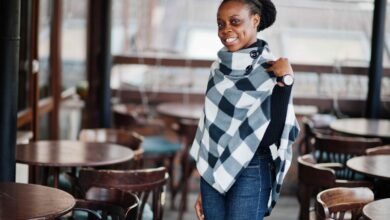How to Tie a Fashion Turban Headband

A turban is a type of head covering that features several layers and is evenly layered on all sides, providing ample coverage to protect the wearer’s scalp from exposure to harmful elements such as pollution. Perfect for both casual and formal events.
Turbans are commonly worn by Sikh men (Dastar) and occasionally by women, as well as Hindu monks and some Muslim scholars. The way in which it is tied can indicate either social status or regional identification.
Tie a knot
Fashion turbans can be an excellent way to keep hair and head tidy while still looking fashionable. There are various ways you can wear one and can use any type of material (or try different patterns or colors that match your outfit), including different fabrics like satin. Tie it correctly so it stays secure; practice on paper first so you know exactly how.
You can purchase square cotton or polyester cloth designed as patkas (Sikh turbans). There are even sports patkas with built-in headbands made of light fabric to provide comfort while sweat-wicking properties.
Choose a cloth that’s large enough to cover your head, then put it on. Center it across your forehead and pull each corner’s strings behind your head until they meet at a knot behind. Fold any excess fabric forward under this knot before tidying up ends or adding an adorable front knot!
Tie a double knot
A double knot on a fashion turban headband is an elegant way to add style and sophistication to your look. It works with any hairstyle, though long locks tend to look especially great with this look. To achieve it, begin by braiding two small sections of hair from each side of your head before wrapping each braid around with the headband to secure them into place before tying a double knot at the top of your head for an eye-catching finish that makes an impression at special events or outdoor gatherings.
Braided knots are another popular style suitable for long hair that works particularly well in combination with chignons or buns, providing an eye-catching twist to this classic knot style. Additionally, this type of headband may come in handy during workouts or other physical activities where keeping the locks secure is key.
If you plan on wearing a full pagh turban, consider using a square cotton or polyester cloth designed as a patka to prevent your hair from getting caught inside it and help it fit more comfortably on your head. You can choose a color or print that complements your outfit for an aesthetically pleasing appearance; just be sure that the patka thick enough to cover eyebrows and ears.
Tie a single knot
Turbans serve both as symbols of faith and protective coverings for hair. Turbans are held sacred by followers of Sikh religion and represent ideals such as spirituality, honor, piety and self-respect. To wear one properly requires washing it first and shaping it with specific folds or pleats before being worn around your neck with its center portion wrapped up behind your head; its center must cover all your hair up to and beyond your ears.
First, purchase a square piece of cloth designed as a patka (small turban). Usually this should be light cotton, although there are sweat-wicking polyester sport patkas as well. Regular or multi-stringed patkas work just fine.
Hold one end of the turban in your mouth to keep it secure before wrapping it around your back head, ending at your hair knot. After finishing wrapping, pull tight and tie a single knot. Create another loop on either side of your head – tighten the knot so it doesn’t slip or work itself loose – tucking the ends inside so they create a flatter look.
Tie a front knot
If you’re searching for an adorable way to wear your turban, try tying a front knot. This style is popular among women and is easy to do with practice. Simply place the Keski cloth across your forehead and pull back its strings until a knot forms behind it; twist the ends into coils before tucking tightly under your hair knot.
The turban is an iconic symbol of Sikhism and often worn by non-Sikhs as well. It represents ideals such as spirituality, honor, and piety while its practical uses include protecting from sunlight or elements while keeping hair free of lice or insects.
Cotton or polyester fabrics make ideal materials for creating turbans, as these soft yet flexible materials allow you to wrap it easily around yourself and experiment with folds and pleats to create unique styles. Some people like to mix colors for their turbans while others opt for uniformity; it is important that a comfortable fabric be chosen which won’t tighten or loosen too easily so the turban remains secure during wear.

